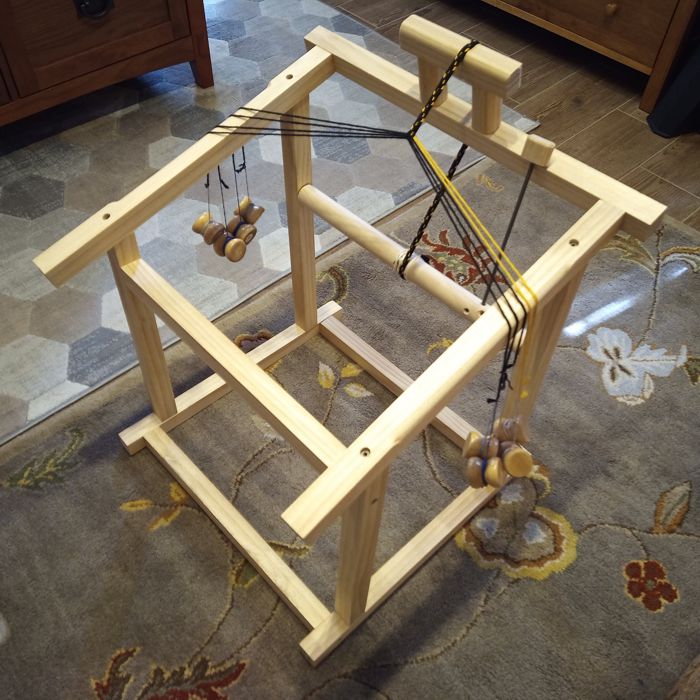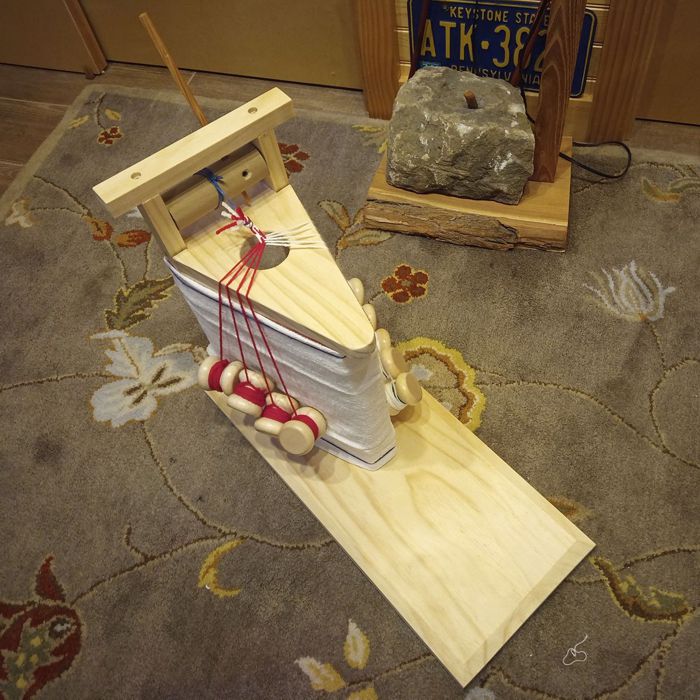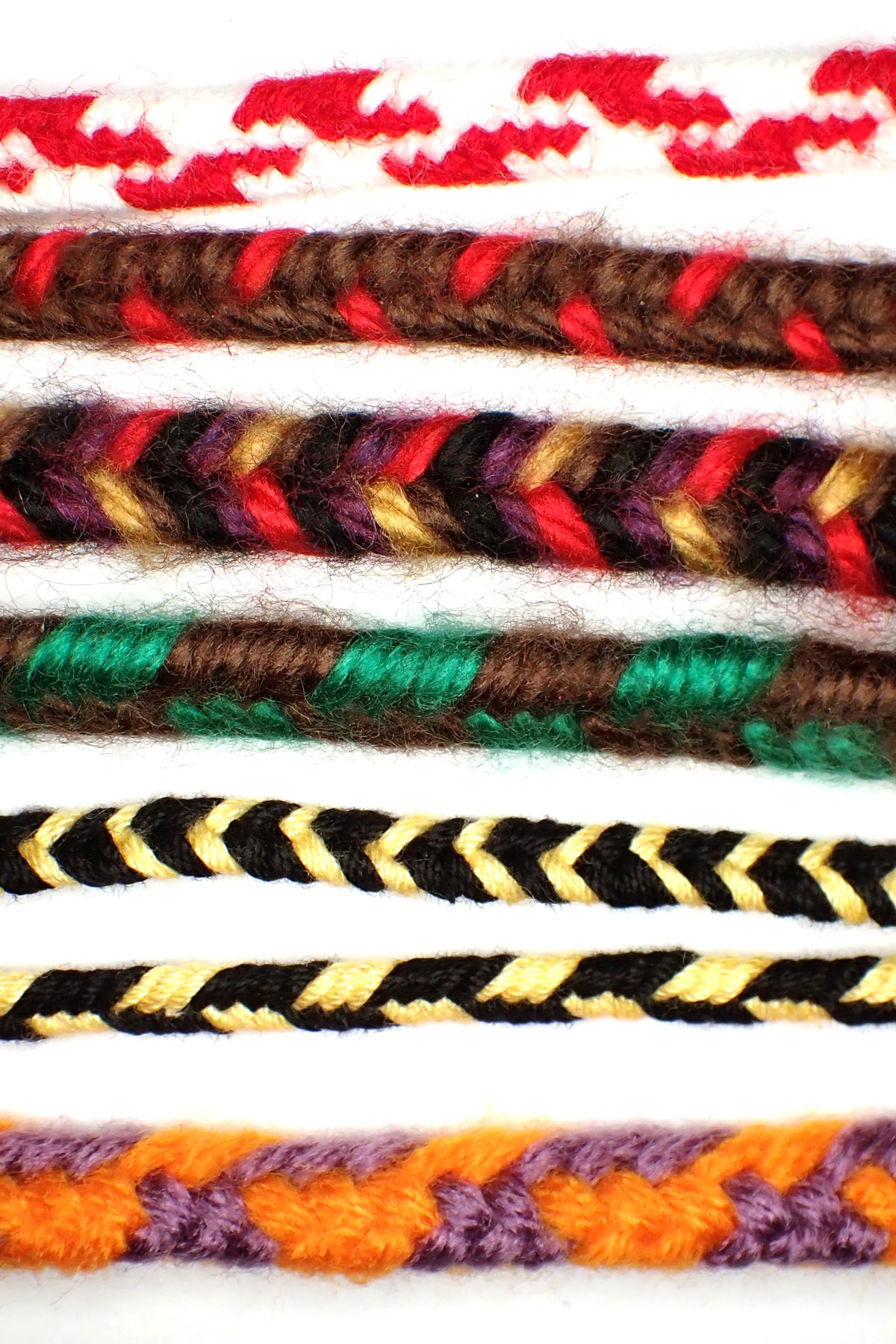I will be teaching a class at the sixth international braiding conference next year in Cleveland, so I have been doing a lot of experimentation and research on a braid called “shige-uchi”.
As you know, most braiding in Japan is performed on braiding stands, called “dai”. A braiding researcher in Japan clued me in to the fact that this braid was made traditionally on three different braiding stands, but only one of those pieces of equipment is used today. The two other dai are rarely seen even in Japan these days, and most braiders outside of Japan have never heard of them.
If I lived in Japan, I could probably make an appointment to travel to one of the few braiding studios that still possess them. In the USA, if I wanted to experiment with these stands I was going to have to DIY them based on some of the few photos that exist on the Internet.
The first is a stand that appears to be specialized just for the shigeuchi braid, since it is called the “shigeuchi-dai”. The unbraided strands hang down over the sides of the dai, and are wound around weighted bobbins called “tama”. The strands are passed between other strands and moved from side to side and to create the braid at the center. The completed braid passes over the “torii” at the top of the dai and is wound around the roller at the back. For scale, this stand is about 2 feet tall.
The second stand is used for several different braids, but usually with an odd number of strands. It is called a “sankaku-dai” because of its triangular (san=3, kaku=angle) top. The strands are (again) passed from side to side, but over the top instead of across a gap. This stand is smaller, at about 16 inches tall.
Both stands are made from pine to keep them affordable, and assembled with screws to keep assembly (and disassembly) simple. Learning to braid on these dai has been fun and informative. My researcher friend in Japan tells me they are most likely the only dai of their kind in North America!
Here is a sampling of sankakudai braids in various materials and colors:




